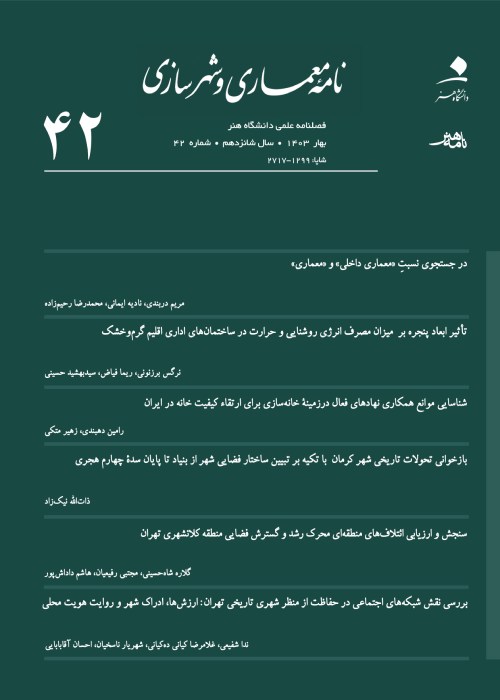Analysis of the Relationship between Types of Urban Form and Social Sustainability in Neighborhoods of TehranCase Study: Chizar, Shahrak Gharb, Narmak and Imamzadeh Yahya Neighborhoods
Cities have found a special status in sustainability practices, to the extent that urban sustainability has become one of the main issues in today's world. Meanwhile, from the social viewpoint, the concept of sustainability is always considered as a neglected field, and as a result, urban researchers are less concerned with its relation to planning issues (such as urban form). Meanwhile, studies show that the main roots of social crises lie in the neighborhoods of large cities and their situation. Whereas, social sustainability has become a significant objective of urban planning practice, and has a presence in the various stages of the development process of urban neighborhoods. This research aims to develop a method for measuring social sustainability in relation to urban form as one of the main tools of urban planning intervention. First, typology of the neighborhood form and measurement methods of social sustainability in relation to each form has been derived from theoretical literature. Based on studies conducted in the first stage, the urban form of the neighborhood is divided into four types: shifting planned, shifting organic, stable planned, and stable organic forms. According to the characteristics of each of the four types of urban form, a series of neighborhoods in Tehran city was selected as a case study and then a questionnaire was distributed among its inhabitants to measure social sustainability, i.e. Shahrak Gharb neighborhood has been selected as a stable planned form, Narmak neighborhood as a shifting planned form, Imamzadeh Yahya as a stable organic form, and Chizar as a shifting organic form. Moreover, in order to measure social sustainability, the concept is divided into two dimensions of "social justice/social inclusion" and "social capital/social cohesion", and it was calculated using the following ten main indicators: place attachment, social mix/cultural unity, social interactions, security/trust, demographic stability/change, basic needs (housing, water, sewage, education and viability), wage distribution, access to local opportunities and facilities, health and safety, and decision making/participation. Using Multivariate analysis of variance (MANOVA), it has been determined that the level of social sustainability of the shifting planned neighborhood is the highest one among those case studies. It should be noted that Pearson correlation test was performed to measure the dimensional reliability of factors, which consists of less than three indicators, and its correlation with the value of 0.5 can be considered as "strong". The characteristics of the urban form of each neighborhood in four factors of density, land use, type of urban block and open spaces network, have been investigated using analytical tools such as Space syntax and ArcGIS. Finally, it has been analyzed how each of urban form factors affected these differences. According to the analyses, it can be said that in the planned neighborhoods, if the initial density and compactness will be low, the amount of change can increase the density over time to a level that ensures social sustainability. Of course, each factor of urban form has a threshold limit. That is, passing from a certain limit can reverse the relationship to social sustainability and be a disturbance factor for it.
- حق عضویت دریافتی صرف حمایت از نشریات عضو و نگهداری، تکمیل و توسعه مگیران میشود.
- پرداخت حق اشتراک و دانلود مقالات اجازه بازنشر آن در سایر رسانههای چاپی و دیجیتال را به کاربر نمیدهد.



